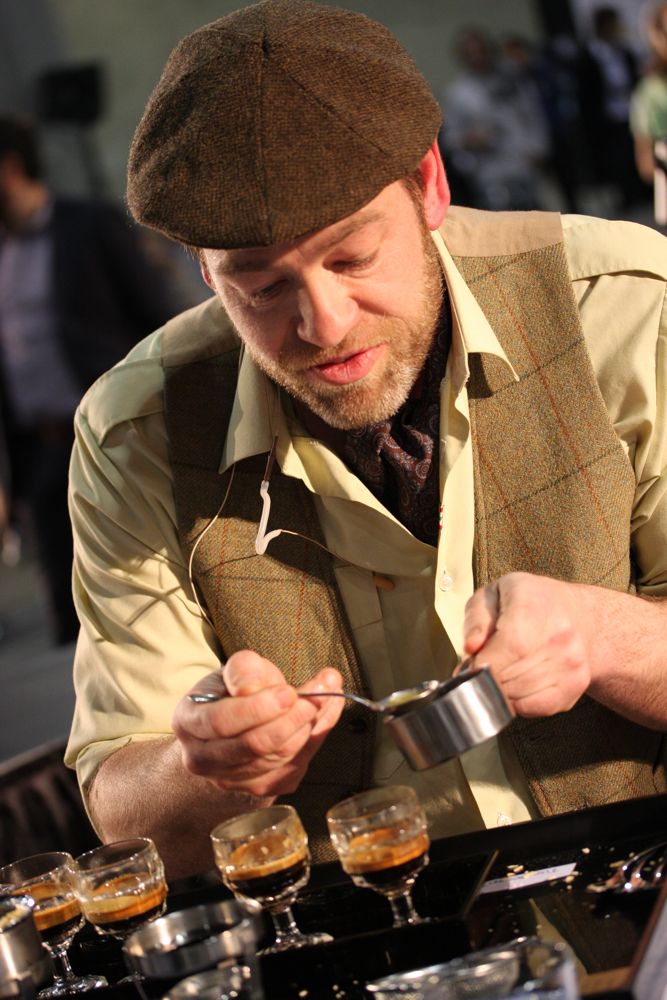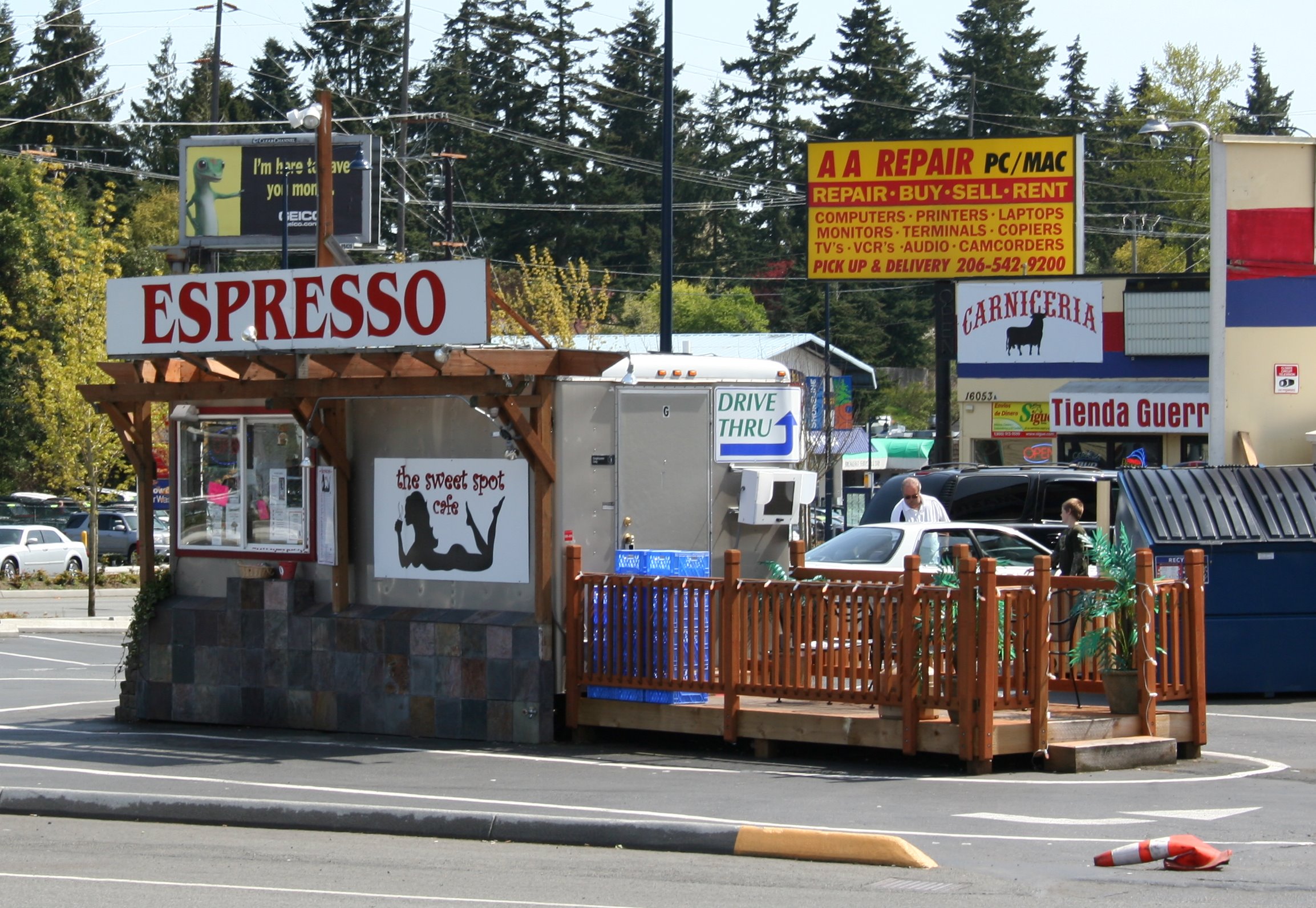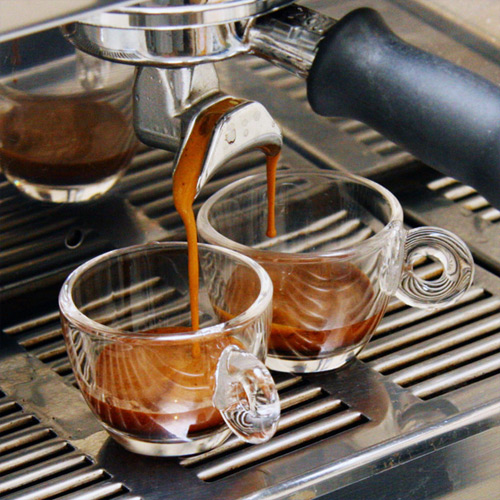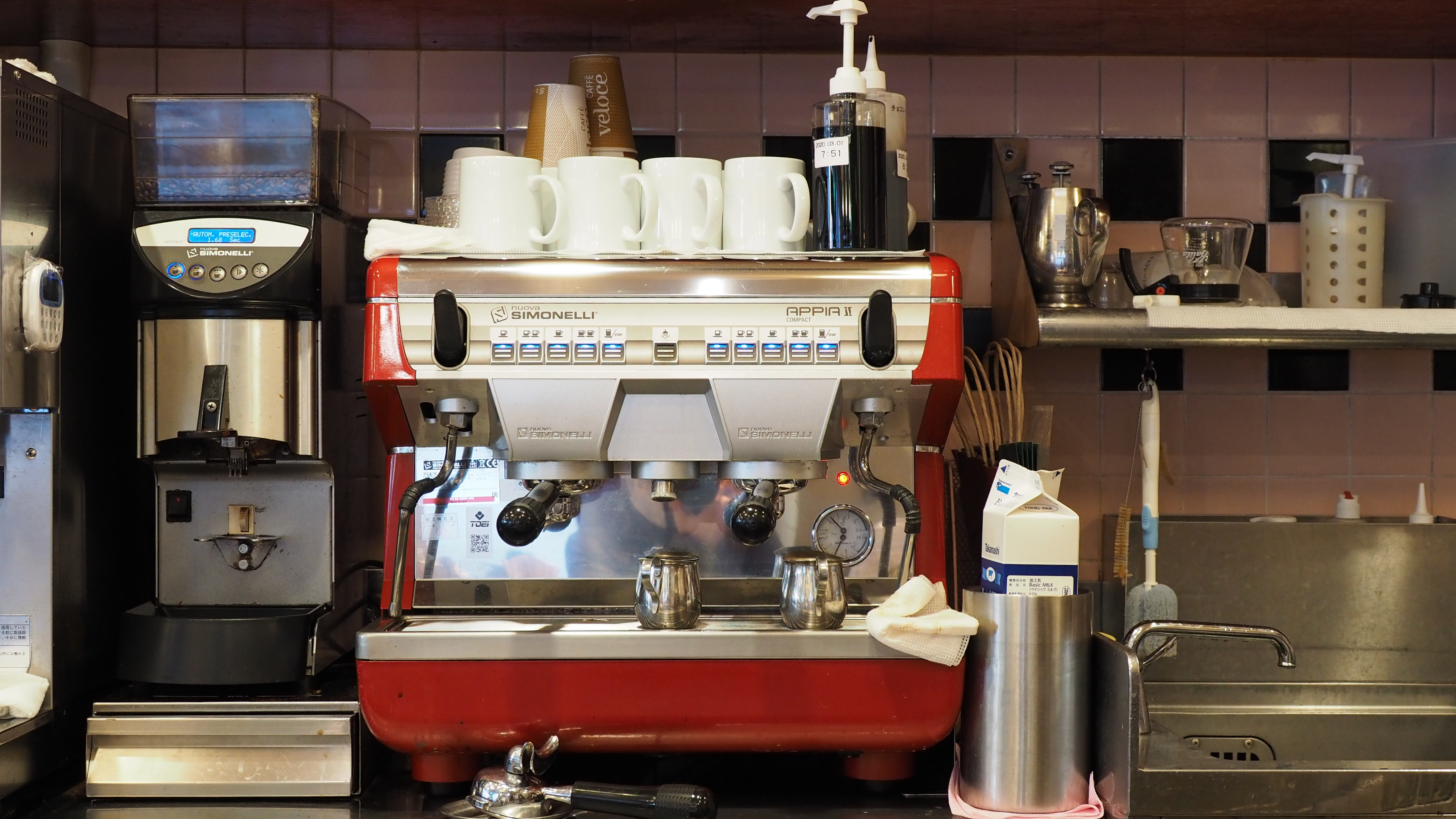|
Barista
A barista (; ; from the Italian/Spanish for "bartender") is a person, usually a coffeehouse employee, who prepares and serves espresso-based coffee drinks. Etymology and inflection The word ''barista'' comes from Italian where it means a male or female "bartender" who typically works behind a counter, serving hot drinks (such as espresso), cold alcoholic and non-alcoholic beverages, and snacks. Prieto (2021) shows that the word ''barista'' has been documented since 1916 in both Spanish and Italian. The native plural in English and Spanish is ''baristas'', while in Italian the plural is ''baristi'' for masculine (literally meaning "barmen", "bartenders") or ''bariste'' for feminine (literally meaning "barmaids"). Application of the title While the title is not regulated, most coffee shops use the title to describe the preparer of coffee and operator of an espresso machine. Baristas generally operate a commercial espresso machine, and their role is preparing and pulling the ... [...More Info...] [...Related Items...] OR: [Wikipedia] [Google] [Baidu] |
World Barista Championship
The World Barista Championship (WBC) is an annual barista competition operated by World Coffee Events for the title of World Barista Champion. The competition is composed of the winners of the national barista championships, which are operated by the Specialty Coffee Association (SCA) chapters, or an approved, independent, non-profit national body. First held in 2000, the event is hosted in a different city every year. The most recent edition in 2022 was in Melbourne, with the 2023 edition scheduled to be in Athens, Greece. History The first competition was in Monte Carlo in 2000. The WBC was dominated in its early years by Scandinavian baristas and was held in Europe or the United States from its inception until 2007 when it was hosted in Tokyo, Japan. In 2016, significant changes were made to the competition format: Grinders were now provided by the competition's partner ( Mahlkönig), new models of espresso machines were introduced, and the cappuccino was replaced by a "milk dr ... [...More Info...] [...Related Items...] OR: [Wikipedia] [Google] [Baidu] |
United States Barista Championship
The United States Barista Championship (USBC), is an annual American coffee-brewing competition designed to evaluate baristas on their skills in espresso-based drink preparation and service. Competitors prepare and serve three courses of espresso-based beverages consisting of straight espressos, milk beverages, and signature drinks. They are then scored on taste, presentation, and technical proficiency. The winner represents the United States in the World Barista Championship. Format Qualifying All USBC competitors must first qualify at a CoffeeChamps Qualifying Competition, which is an abbreviated version of the USBC. Two Qualifying Competitions are held each year, the top eighteen competitors from each Qualifying Competition move on to USBC. Places 7-18 move into Round One of USBC. The top six from each qualifying competition receive a bye into the semifinal round. USBC consists of three rounds: Round One, Semi-Finals, and Finals. At the end of the first round, the competitors ... [...More Info...] [...Related Items...] OR: [Wikipedia] [Google] [Baidu] |
Barista (film)
''Barista'' is a 2015 American documentary film directed by Rock Baijnauth. The film follows five baristas, as they prepare for the 2013 United States Barista Championship. It is the first in a series. Viewers are introduced into the elevation of the everyday drink, into a craft culture not unlike that of beer and wine. The film was acquired for distribution by Samuel Goldwyn Films. Synopsis The film follows four baristas preparing for the 2013 United States Barista Championship The United States Barista Championship (USBC), is an annual American coffee-brewing competition designed to evaluate baristas on their skills in espresso-based drink preparation and service. Competitors prepare and serve three courses of espresso-b .... Eden-Marie Abramowicz, Charlie Habegger, Truman Severson and Ryan Redden obsessive over every detail when it comes to extracting the perfect cup of coffee. As the film progresses, the makers add a fifth personality, Los Angeles-based Charles Babinski, who ... [...More Info...] [...Related Items...] OR: [Wikipedia] [Google] [Baidu] |
Bikini Barista
A bikini barista is a woman who works as a barista, preparing and serving coffee beverages, while dressed in scanty attire such as a bikini, lingerie or a crop top combined with bikini bottoms or hotpants. In the United States, this marketing technique (sometimes referred to as sexpresso or bareista) originated in the Seattle, Washington area in the early 2000s. Similar phenomena have appeared in countries such as Chile and Japan since at least the 1980s. Development of concept Sexpresso drive-through stands and coffee outlets are numerous in the greater Seattle area, so much so that coffee stands that have fully clothed employees often advertise themselves as "family friendly". The exact inventor of the "bikini barista" concept is debated. The "Natte Latte" chain's first location was opened in November 1999 by Mary Keller, and its employees began sporting pink leather hotpants in 2001. ("The first Natte Latte opened in SeaTac in November 1999 and closed two years later, shor ... [...More Info...] [...Related Items...] OR: [Wikipedia] [Google] [Baidu] |
Baristas
A barista (; ; from the Italian/Spanish for "bartender") is a person, usually a coffeehouse employee, who prepares and serves espresso-based coffee drinks. Etymology and inflection The word ''barista'' comes from Italian where it means a male or female "bartender" who typically works behind a counter, serving hot drinks (such as espresso), cold alcoholic and non-alcoholic beverages, and snacks. Prieto (2021) shows that the word ''barista'' has been documented since 1916 in both Spanish and Italian. The native plural in English and Spanish is ''baristas'', while in Italian the plural is ''baristi'' for masculine (literally meaning "barmen", "bartenders") or ''bariste'' for feminine (literally meaning "barmaids"). Application of the title While the title is not regulated, most coffee shops use the title to describe the preparer of coffee and operator of an espresso machine. Baristas generally operate a commercial espresso machine, and their role is preparing and pulling the s ... [...More Info...] [...Related Items...] OR: [Wikipedia] [Google] [Baidu] |
Barista - Ystad -2013
A barista (; ; from the Italian/Spanish for "bartender") is a person, usually a coffeehouse employee, who prepares and serves espresso-based coffee drinks. Etymology and inflection The word ''barista'' comes from Italian where it means a male or female "bartender" who typically works behind a counter, serving hot drinks (such as espresso), cold alcoholic and non-alcoholic beverages, and snacks. Prieto (2021) shows that the word ''barista'' has been documented since 1916 in both Spanish and Italian. The native plural in English and Spanish is ''baristas'', while in Italian the plural is ''baristi'' for masculine (literally meaning "barmen", "bartenders") or ''bariste'' for feminine (literally meaning "barmaids"). Application of the title While the title is not regulated, most coffee shops use the title to describe the preparer of coffee and operator of an espresso machine. Baristas generally operate a commercial espresso machine, and their role is preparing and pulling the s ... [...More Info...] [...Related Items...] OR: [Wikipedia] [Google] [Baidu] |
Coffee Culture
Coffee culture is the set of traditions and social behaviors that surround the consumption of coffee, particularly as a social lubricant. The term also refers to the cultural diffusion and adoption of coffee as a widely consumed stimulant. In the late 20th century, espresso became an increasingly dominant drink contributing to coffee culture, particularly in the Western world and other urbanized centers around the globe. The culture surrounding coffee and coffeehouses dates back to 16th-century Turkey. Coffeehouses in Western Europe and the Eastern Mediterranean were not only social hubs but also artistic and intellectual centres. In the late 17th and 18th centuries, coffeehouses in London became popular meeting places for artists, writers, and socialites, as well as centres for political and commercial activity. In the 19th century a special coffee house culture developed in Vienna, the Viennese coffee house, which then spread throughout Central Europe. ''Les Deux Magots'' in Pa ... [...More Info...] [...Related Items...] OR: [Wikipedia] [Google] [Baidu] |
Cappuccino
A cappuccino (; ; Italian plural: ''cappuccini'') is an espresso-based coffee drink that originated in Austria and was later popularized in Italy and is prepared with steamed milk foam (microfoam). Variations of the drink involve the use of cream instead of milk, using non-dairy milk substitutes and flavoring with cinnamon or chocolate powder. It is typically smaller in volume than a caffè latte, with a thicker layer of microfoam. The name comes from the Capuchin friars, referring to the colour of their habits, and in this context referring to the colour of the beverage when milk is added in small portion to dark, brewed coffee (today mostly espresso). The physical appearance of a modern cappuccino with espresso créma and steamed milk is a result of a long evolution of the drink. The Viennese bestowed the name "Kapuziner", possibly in the 18th century, on a version that included whipped cream and spices of unknown origin. The Italian cappuccino was unknown outside Italy unti ... [...More Info...] [...Related Items...] OR: [Wikipedia] [Google] [Baidu] |
Espresso
Espresso (, ) is a coffee-brewing method of Italian origin, in which a small amount of nearly boiling water (about ) is forced under of pressure through finely-ground coffee beans. Espresso can be made with a wide variety of coffee beans and roast degrees. Espresso is the most common way of making coffee in southern Europe, especially in Italy, France, Spain, and Portugal. It is also popular in Switzerland, Croatia, Bosnia and Herzegovina, Bulgaria, Greece, South Africa, the United Kingdom, the United States, Canada, Australia and New Zealand. Espresso is generally thicker than coffee brewed by other methods, with a viscosity similar to that of warm honey. This is due to the higher concentration of suspended and dissolved solids, and the ''crema'' on top (a foam with a creamy consistency). As a result of the pressurized brewing process, the flavors and chemicals in a typical cup of espresso are very concentrated. Espresso has more caffeine per unit volume than most coffee be ... [...More Info...] [...Related Items...] OR: [Wikipedia] [Google] [Baidu] |
Coffeehouse
A coffeehouse, coffee shop, or café is an establishment that primarily serves coffee of various types, notably espresso, latte, and cappuccino. Some coffeehouses may serve cold drinks, such as iced coffee and iced tea, as well as other non-caffeinated beverages. In continental Europe, cafés serve alcoholic drinks. A coffeehouse may also serve food, such as light snacks, sandwiches, muffins, fruit, or pastries. Coffeehouses range from owner-operated small businesses to large multinational corporations. Some coffeehouse chains operate on a franchise business model, with numerous branches across various countries around the world. While ''café'' may refer to a coffeehouse, the term "café" generally refers to a diner, British café (colloquially called a "caff"), "greasy spoon" (a small and inexpensive restaurant), transport café, teahouse or tea room, or other casual eating and drinking place. A coffeehouse may share some of the same characteristics of a bar or restaurant, ... [...More Info...] [...Related Items...] OR: [Wikipedia] [Google] [Baidu] |
Latte
Caffè latte (), often shortened to just latte () in English, is a coffee beverage of Italian origin made with espresso and steamed milk. Variants include the chocolate-flavored mocha or replacing the coffee with another beverage base such as masala chai (spiced Indian tea), mate, matcha, turmeric or rooibos; alternatives to milk, such as soy milk or almond milk, are also used. The term comes from the Italian ' or ', from ', literally "coffee and milk"; in English orthography either or both words sometimes have an accent on the final ''e'' (a hyperforeignism in the case of *''latté'', or to indicate it is pronounced, not the more-common silent final ''e'' of English). In northern Europe and Scandinavia, the term ''café au lait'' has traditionally been used for the combination of espresso and milk. In France, ' is from the original name of the beverage (caffè latte); a combination of espresso and steamed milk equivalent to a "latte" is in French called and in German '. Ori ... [...More Info...] [...Related Items...] OR: [Wikipedia] [Google] [Baidu] |
Soda Jerk
Soda jerk (or soda jerker) is an American term used to refer to a person — typically a young man — who would operate the soda fountain in a pharmacy (shop), drugstore, preparing and serving carbonated drink, soda drinks and ice cream sodas. The drinks were made by mixing flavored syrup, carbonated water, and occasionally Malted milk, malt powder over either ice or a few scoops of ice cream. The drink would then be served in a tall glass with a long-handled spoon, most commonly known as a "Iced tea spoon, soda spoon", and drinking straws. Soda jerks were relatively common in the United States from the 1920s until the late 1950s; the occupation essentially no longer exists, due to economic and social trends. Origin of term The term ''soda jerk'' was a pun on ''soda clerk'', the formal job title of the drugstore assistants who operated soda fountains. It was inspired by the "jerking" action the server would implement to drive the fountain handle back and forth when adding soda. ... [...More Info...] [...Related Items...] OR: [Wikipedia] [Google] [Baidu] |










